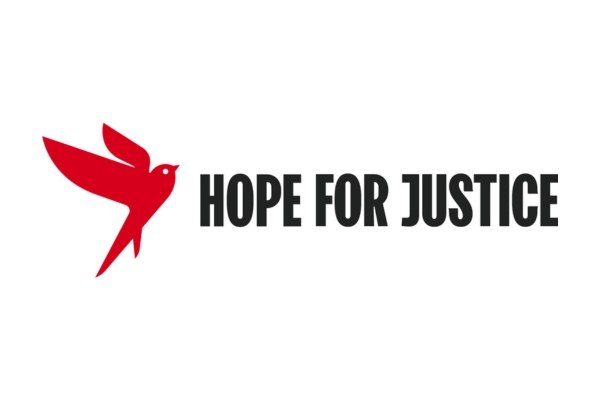Insights
INSIGHTS
All Topics
My Account
A charity guide to effective storytelling
01 Aug 2024by Laura Stanley
We share best practices for communicating your charity’s story online and how charities can focus on results to demonstrate impact
The art of storytelling is essential for charities. Storytelling helps charities communicate the importance of their mission effectively, explain their purpose, drive donations, reach more people, and continue delivering the services needed by those that that need them the most.
But storytelling is not an easy task. It requires creativity, time, and for charities, often sensitivity, in sharing about the difficult issues charities exist to address. Furthermore, charities must centre the needs of their beneficiaries, particularly when using case studies to talk about their work. When it is not possible to use lived experience to demonstrate impact, charities must find another way to tell the story.
Charities must also think about the people reading their content, from those who have just stumbled upon their cause to those who are seasoned supporters of it. Those who have just discovered the charity will want to know more quickly, while those who are regular supporters may prefer more in-depth storytelling about the mission they have helped to fund.
In short, how a charity tells its story will depend on the purpose. Below, we explore how charities can tell their story in different ways for different audiences, with one key thread connecting them all: results.
Find out more at the .ORG Learning Center
Show your working: from action to results
How you write a blog post is different to how you write a direct mail pamphlet. But for the most part, there are similarities that hold true. Statistics, for example, are an excellent way to get information across quickly – your data itself can tell a story. How many services have been delivered or how many people have been helped can communicate a charity’s philanthropic impact in a clear and concise way. Philanthropic impact is one of the most researched areas of a charity’s operations – it is important that charities make it easy to find for those looking.
Charities may also be telling their stories to award schemes or grant funders. The same principles of clarity and conciseness are just as essential here, when judges or funders are poring over multiple entries with limited time to judge them. Making the results of your work easy to find is vital, while charities should also take care to show the direct link between the outcome and the situation they are trying to address.
Consider what your audience wants to know – think about entry criteria or the purpose behind the grant. For example, are they working specifically with local organisations? In which case, make clear the work you are doing in your local community before talking about your work outside it.
“Make each response to each entry question succinct and engaging. Make sure your answers address the elements required under each category,” explains the tips for entering the .ORG Impact Awards. The annual awards program, delivered by Public Interest Registry (PIR), the organisation that powers the .org domain name, celebrates the work and achievements of charities who have tackled issues facing the global community.
“Think about organizing the entry responses like you’re telling a story, which will help give the judges a complete picture of the situation or challenge you’re describing, how your nominee developed a plan to approach the situation and how success was measured.”
Using data to tell your story is not just about telling your story quickly, it’s also about driving a narrative with supporting information. Charities should be plain and consistent around how they measure success – it ensures transparency and accountability and makes it easier for your audience to mark your progress and understand the success you’ve had or where you are going!
“The judges are looking for evidence of your nominee’s hard work, so be sure to show it off!” concludes the .ORG Impact Awards, and the same is true of all charity stakeholders, from donors to trustees.
Balancing structure and emotion
A good place to start when telling your charity’s story is with structure. Whether it is an awards entry or a blog post giving project updates to supporters informally, structure is what helps charities tell their story in the most relevant way. It helps charities prioritise their information – starting with what each audience most wants to know, and working from there.
There are many different narrative structures that charities can use to tell their story, but one of the most useful structures for charities is STAR – Situation, Task, Action, Results. The STAR method is well-suited for getting across information clearly, allowing charities to set out their mission and describe in detail the actions they have taken to address it. It is a helpful way for charities to think about their achievements with distance, enabling them to tell their story in stages while making space for all the information your audience needs to know.
However, though structure is crucial, and helpful for charities when telling their story across multiple channels, there must also be room for emotion. Emotion is an incredibly powerful tool to underscore the purpose of their work, as charities exist for the benefit of the communities they serve. Research has shown that evoking sympathy and empathy can inspire people to want to help others, while positive emotional stories encourages them to donate.
Data and individual stories can work together to tell a more complete story of a charity. Charities can follow the same STAR structure, but weave in the story of someone being helped, or the work impacting one person’s life for the better, with results so they are not simple numbers. The best charity storytellers use this blend of both to get their charity’s message across.
The British Heart Foundation’s (BHF) website is an excellent example of how to balance structure and emotion to communicate their story. Its latest campaign to prevent cardiac arrest in young people begins with the statistic that 12 people under the age of 35 are lost to sudden cardiac death each week. BHF then shares the real-life stories of 12 people who have been affected by this, driving home the reality of that statistic and urging people to donate to change it. Indeed, below the stories, BHF highlights the research each donation funds and how it can help, painting a full picture of the impact and humanity of their efforts.
More on this topic
28 Mar 2025by Elaine Taylor
Human rights and tech: Foxglove UK
Recommended Products
Our Events
Charity Digital Academy
Our courses aim, in just three hours, to enhance soft skills and hard skills, boost your knowledge of finance and artificial intelligence, and supercharge your digital capabilities. Check out some of the incredible options by clicking here.




















